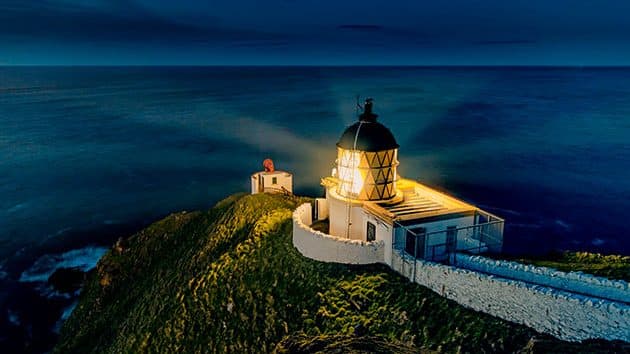No one in Britain is more than 70 miles from the sea. We asked finalists of this year’s Shipwrecked Mariners’ Society photographic competition for their best sea photography tips.
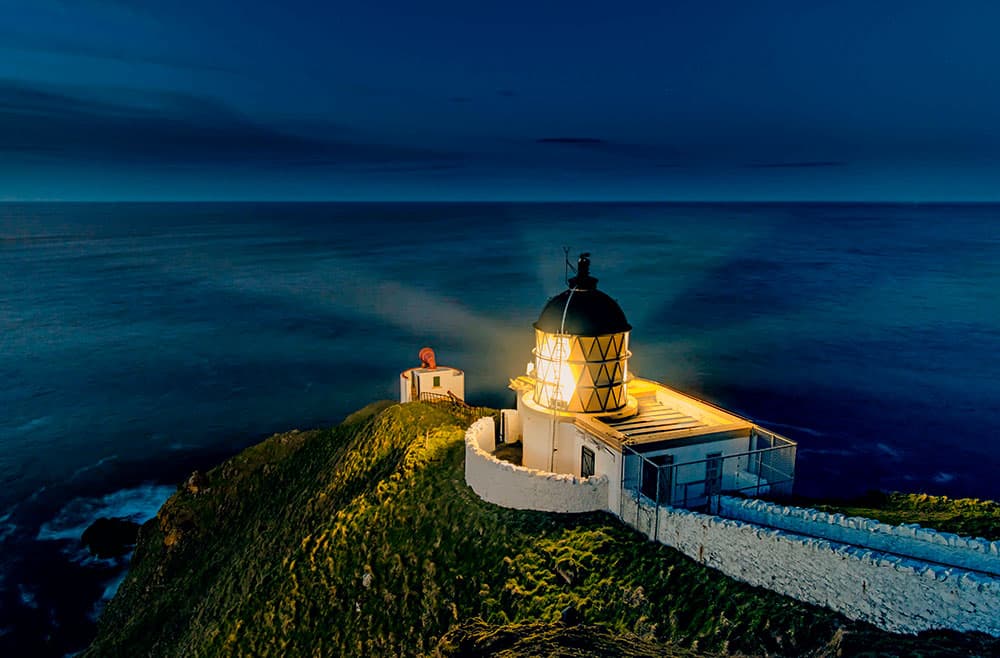
The judges loved the contrast between the warm light emanating from the lighthouse, and the cool blue sea and sky. Nikon D810, 24-70mm f/2.8 lens, 5secs at f/4.5, ISO 200 © Willie Pollard
‘Beams’ by Willie Pollard – Winner
This image was taken at St. Abb’s Head, the clifftop overlooking St. Abbs, in the Scottish Borders. It’s a favourite spot of mine because there are sea birds as well as very high cliffs overlooking the North Sea. The lighthouse stands like a guardian. I arrived in time for sunset and stayed to see how the light changed. The beams of light reaching out across the sea got better and better as the light dropped.
Willie’s sea photography tips
- Research the location and try to visit a few times. I had previously visited this spot in daylight to do a recce and work out my composition.
- Go prepared. I always have good warm clothing and a hot drink. You are exposed to the elements on these cliffs.
- When you’re photographing in the golden hour, don’t leave as soon as the sun sets. Stay around a bit longer and observe the light changing.
- I belong to Midlothian Camera Club. Local clubs are a great way to expand your knowledge and pick up tips.
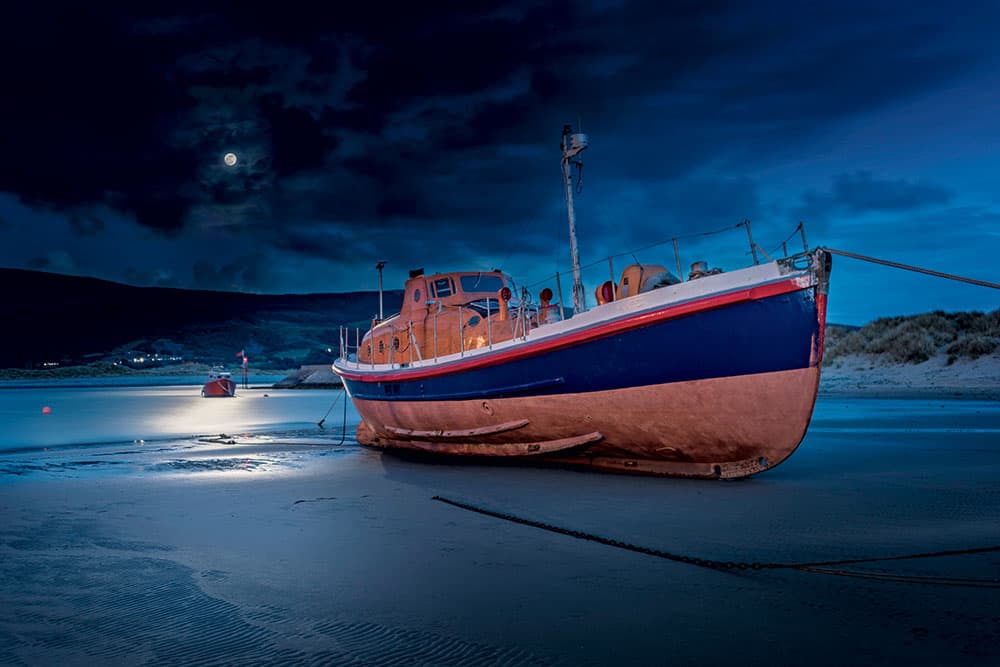
This atmospheric image shows great technical skill. Nikon D810, 28-300mm lens, 30secs at f/8, ISO 100 © David Jenner
‘Not forgotten’ by David Jenner
This image was taken at Barmouth harbour, North Wales. On the night of the full moon the tide was a long way out, enabling me to get on to the beach and up close to this magnificent old lifeboat. However, the poorly lit environment posed a number of issues. My first test shot of 30 seconds illustrated the difficulties, since all I could see in the black abyss was the bright moon that was so overexposed it looked like the sun. I knew that this image would require multiple exposures, which I would have to blend together in post-production.
It never ceases to amaze me just how short an exposure you need to capture the colour and detail in the surface of the moon and, after a number of shots which were constantly interrupted by passing cloud, I finally got the perfect image at 1/640sec at f/4 (ISO 100). Once this had been achieved, I then set about capturing the image of the boat itself. No matter how long I exposed the shot there just wasn’t enough ambient light from the harbour to capture the detail in the vessel’s paintwork. So my only solution was to light paint the boat with a pocket torch. A 30secs exposure at f/8 (ISO 100) gave me just enough to bring out the detail in the raw file. Back in the studio I then blended the short exposure I did of the moon, along with my light painted long exposure of the boat to give me the perfectly balanced image. www.davidjenner.co.uk.
David’s sea photography tips
- Getting a good photograph of the moon that records the detail requires a shorter exposure than many people think. To prevent the moon overexposing, shoot it as a separate exposure, usually around 1/500sec, then compose that in with your correctly exposed foreground.
- Light painting can be trial and error. I find 30 seconds is usually long enough and will not require you to set your camera to bulb mode, so find an aperture that will work with this duration. For this picture I started at f/16 but the image was too dark, so I opened up the aperture to f/8. While the shutter is open, move the light evenly all over the subject, making sure not to walk in front of the camera. You will need a light that has enough power to light your subject from a distance.
- Soft waters and skies look great but be mindful that anything movin in a long exposure (like a boat on the water) will blur. There’s no real solution for this other than increasing the ISO to bring the shutter speed up but then you’ll lose the effect of the water and the sky.
Continues below…
[collection name=”small”]
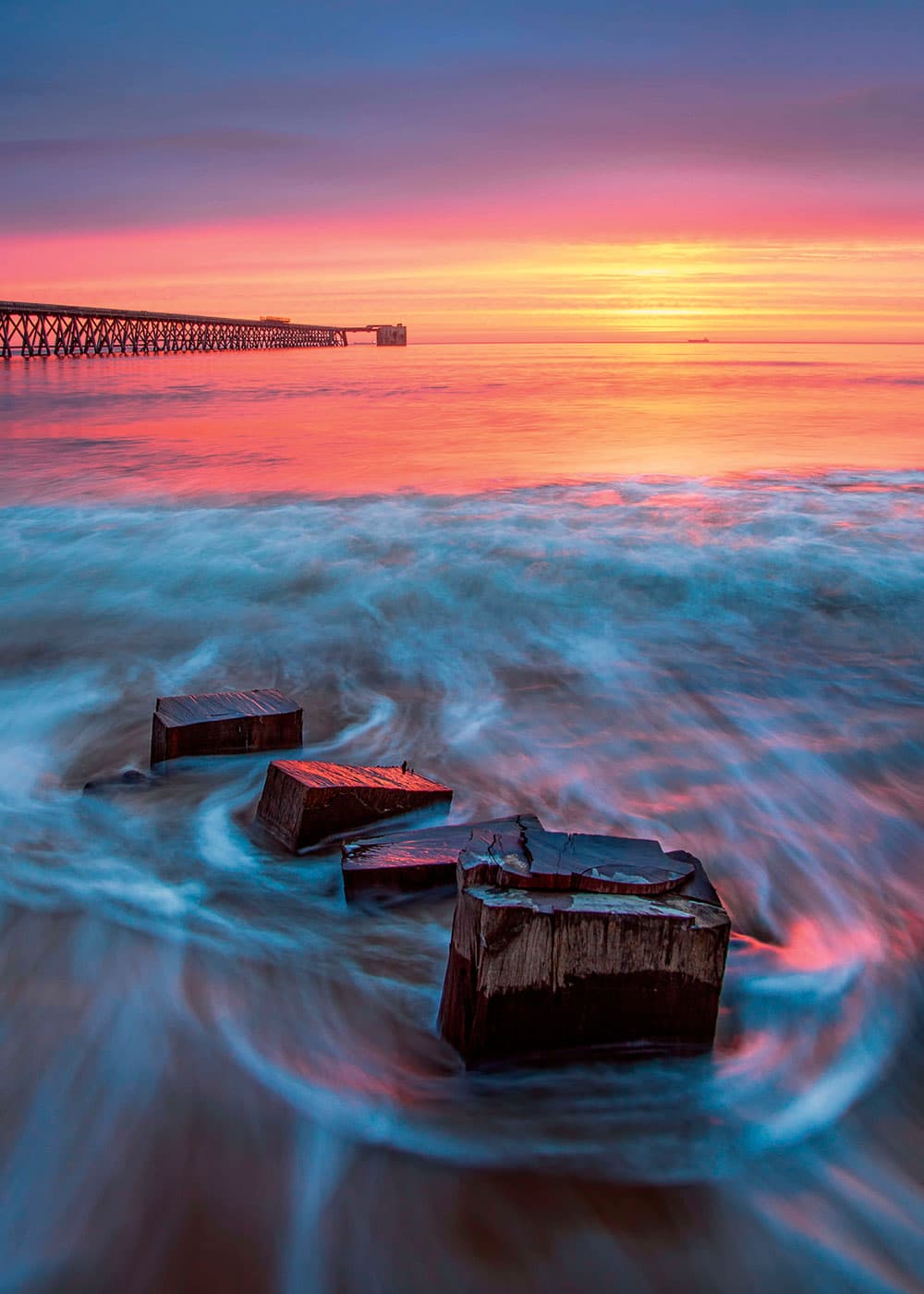
Good composition and beautiful colours. Canon EOS-6D, Sigma 24-105mm Art lens, 2secs at f/8 © Lee Summerson
‘Colours at daybreak’ by Lee Summerson
A friend and I went to the North Sands area of Hartlepool at around 3am one Sunday. The sunrise didn’t get off to a promising start but then all of a sudden this happened. I had to pull the colours back a little in post as it was just too vibrant and looked unreal. www.facebook.com/LeeSummerson1
Lee’s sea photography tips
- Look for a nice foreground feature and try to bring it into the image from one of the bottom thirds. You need an exposure time of about one or two seconds to get some nice flowing motion in the sea.
- It’s usually best to place the horizon on either the top or bottom third of the image, using the rule of thirds. Occasionally, though, it looks good running through the middle of the frame, so do experiment with the composition.
- I recommend using a Lee 0.9 graduated neutral density filter to avoid overexposing the sky and blowing the highlights.
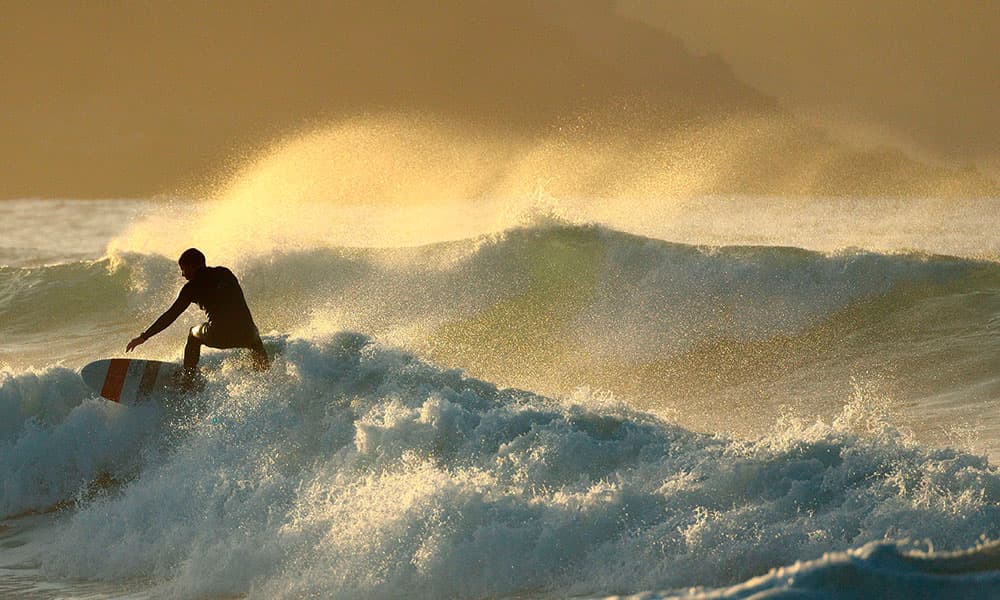
This backlit action shot conveys the drama and excitement of surfing. Nikon D800, 80-400mm lens at 400mm, 1/5000sec at f/5.6, ISO 200 © Roy Curtis
‘Surfing into the wind’ by Roy Curtis
My photo of the surfer was taken on a windy December day at Fistral Beach, Newquay. The sun was setting behind a headland which was in shadow. This provided a dark background for the side-lit waves and spray.
Roy’s sea photography tips
- Don’t take risks with the sea. Don’t assume you are safe standing on rocks close to it, because unexpectedly large waves can, and do, wash people off. The same goes for beaches. Check the tide times so that you don’t get cut off when concentrating on taking photos. I always keep both eyes open when shooting – one for the viewfinder and one on the sea. Promoting coastal safety is a bit of an obsession as I live in Cornwall, where we have quite a few avoidable tragedies each year.
- Check the times and position of sunrise and sunset – just before or after can be the best times to capture coastal views. This goes for the moon as well: two or three times a year the full moon can be captured rising behind St. Michael’s Mount in Cornwall.
- Fistral Beach is one of the best surfing beaches in the UK, meaning there are great photographic opportunities when the ‘surf is up’.
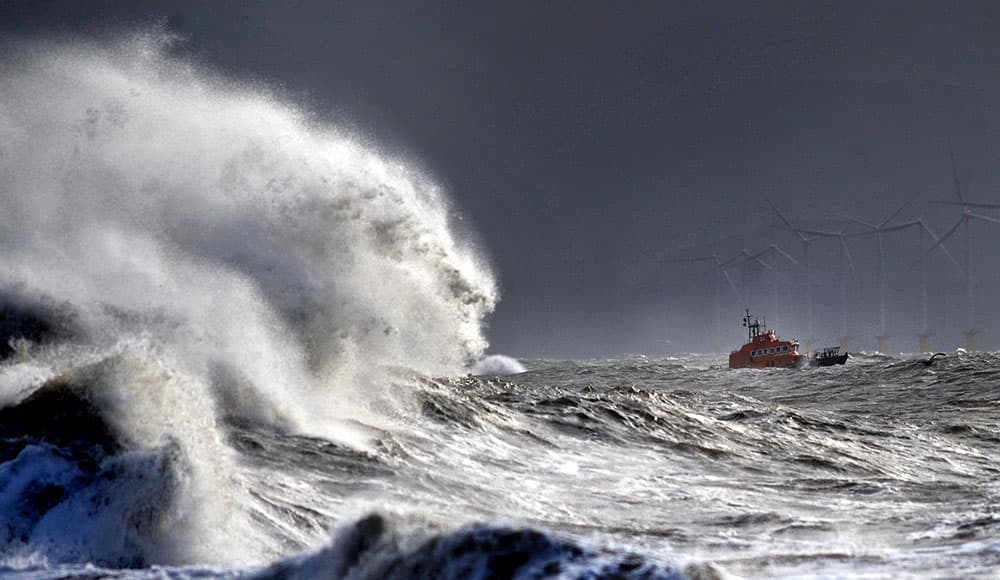
This image conveyed the danger of the sea better than almost any other entry, as a huge wave bears down on the lifeboat. Nikon D3, 300mm lens, 1/400sec at f/4, ISO 200 © Tom Collins
‘RNLI Hartlepool North Sea’ by Tom Collins
I am a volunteer with the Hartlepool RNLI (as shore crew and press officer) so I always make the most of the days when an exercise coincides with a bit of rough weather. This picture was taken during an exercise in a stormy and very cold North Sea, back in February 2015. I took the shot from the Headland area of Hartlepool, a location that offers some stunning photo opportunities on a stormy day as waves crash against the very old Heugh breakwater.
Tom’s sea photography tips
- I always keep an eye the weather forecast and tide table for picture opportunities. There are lots of apps available that provide localised information.
- Get to know your nearest stretch of coastline. A little local knowledge is invaluable. That way you’ll know where to go for the best vantage points.
- Most importantly, when out and about on the coast stay safe and never put yourself at risk trying to get that ‘unique’ picture. The sea can be an extremely dangerous and unforgiving force of nature.
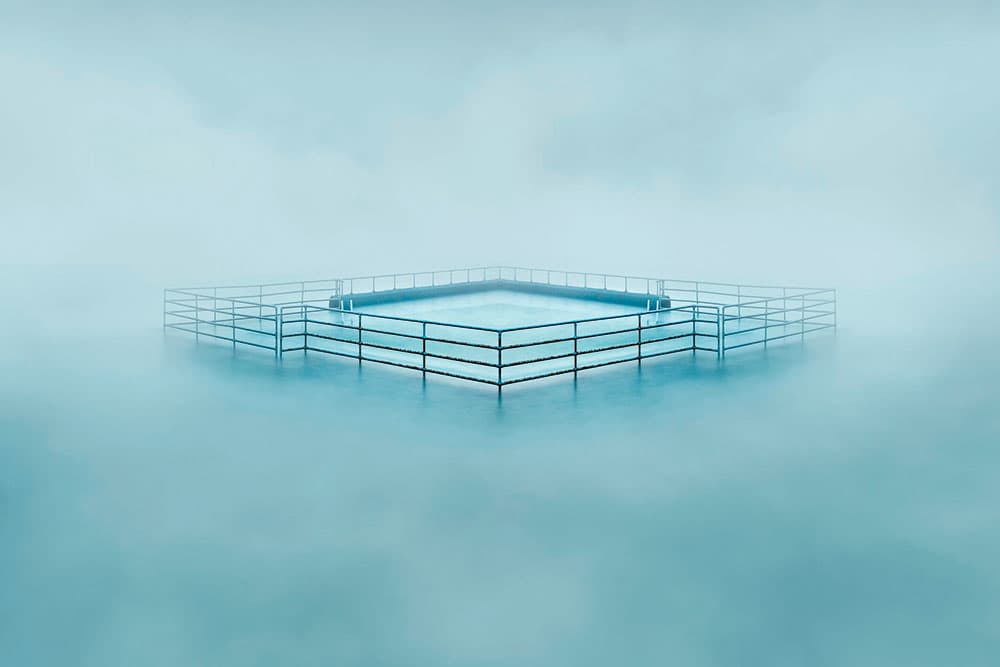
We love how the pool seems to be floating in the clouds here. Nikon D810, Zeiss ZF2, f/14, 77secs © Neil Burnell
‘Abyss’ by Neil Burnell – Editor’s Choice
This image was taken on a misty morning at Shoalstone Pool in Brixham over a spring tide, when the pool gets completely submerged. For this image I decided to shoot a long exposure of the corner section of the pool and mirror that section to make an isolated symmetrical pool. www.flipsidedesign.co.uk.
Neil’s sea photography tips
- I find shooting in soft light, such as misty, foggy or overcast conditions, good for shooting long exposure seascapes, especially when you want to isolate a subject. Try various lengths of exposure to create texture and movement or a silky smooth surface.
- For shooting starscapes, know the area and set up and compose your image in daylight. I only shoot the coast in darkness when conditions are safe, and never on my own.
- A good reliable headlight is vital for night shooting.
The Shipwrecked Mariners’ Society
The Shipwrecked Mariners’ Society was founded in 1839 as a result of the tragic loss of a fleet of fishing boats on the north Devon coast. Since then the society, whose patron is Her Royal Highness The Princess Royal, has become one of the largest national maritime charities. Today, its main purpose is to provide financial support to individuals and their dependants who are in need, and who have worked at sea in the Merchant Navy and fishing fleets. The Society organises an annual photo competition, and this year AP Editor Nigel Atherton was on the panel of judges assessing more than 1,300 entries. His comments on each image are in the captions.

